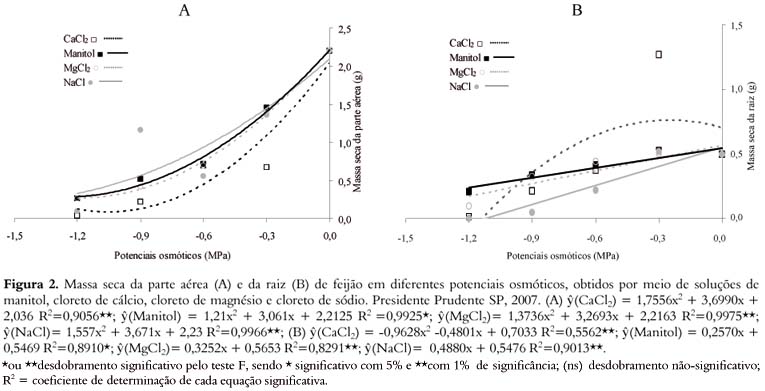Snap-beans (Phaseolus vulgaris L.) have a high nutritionally value. Successful seedling emergence is dependent on the availability of water and is considered the most critical phase in plant development. The objectives of this work were to simulate water deficiency at the beginning of the germination period. Snap-bean seeds of the variety 'Pérola' were submitted to osmotic stress under laboratory conditions. Mannitol, CaCl2, MgCl2 and NaCl were used to develop five degrees of osmotic potential: 0, -0.3, -0.6, -0.9 and -1.2 MPa. Van't Hoff's equation was used to calculate the osmotic potential. The protein pattern of the total soluble proteins after electrophoresis was evaluated with SDS-PAGE. The response parameters were evaluated including the germination, the vigour classification, the root dry weight, the shoot dry weight and the resultant differential protein expression. The experimental design was completely randomised. Data were analysed using the F test (ANOVA), and polynomial regression was used for the osmotic potential levels for each parameter. The protein banding pattern was evaluated using gel imaging. The simulation of a water deficiency resulted in the perception of a stress and a subsequent response to NaCl in all of the parameters that were evaluated. The harsh effects of the NaCl were validated as the lack of the expression of low molecular weight proteins. Proteins with molecular weights of 110 and 30 kDa were indicative of water stress but not of salinity.
Phaseolus vulgaris L.; water deficiency; HSPs





